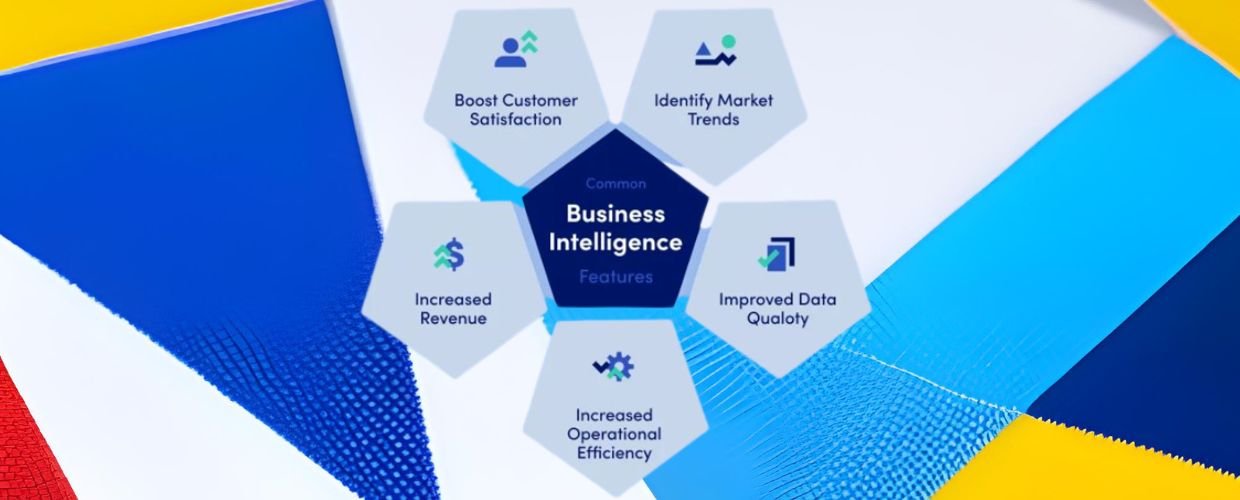Making informed decisions based on accurate and timely information is critical for success in finance. Business intelligence (BI) in finance has revolutionized how financial professionals leverage data to gain insights, analyze performance, and drive strategic decision-making. BI finance solutions integrate data from various sources, apply advanced analytics, and provide visualizations and reports that enable finance teams to monitor financial health, identify trends, and make data-driven decisions. This article explores the concept of BI finance, its benefits, and its impact on financial management.
Understanding BI Finance
BI finance involves the application of business intelligence tools and technologies to financial data, enabling organizations to analyze, monitor, and optimize financial performance. It encompasses financial reporting, budgeting, forecasting, financial planning, and analysis. Its solutions integrate data from multiple sources, such as accounting systems, enterprise resource planning (ERP) systems, and external data sources. Through analytics, data modeling, and visualization, finance professionals gain insights into key financial metrics, enabling them to make informed decisions and drive economic growth.
Enhanced Financial Reporting
BI finance solutions streamline financial reporting processes, eliminating manual data gathering and spreadsheet-based reporting. These solutions consolidate data from multiple sources into a centralized repository, ensuring data accuracy and integrity. Finance professionals can create customizable reports and dashboards that provide real-time visibility into financial performance, including key metrics such as revenue, expenses, profitability, and cash flow. Automating reporting saves time, reduces errors, and enables stakeholders to access accurate financial information when needed.
Data Visualization and Analysis
BI finance solutions provide visualization capabilities that help finance professionals analyze financial data effectively. Visualizations such as charts, graphs, and interactive dashboards enable users to identify trends, spot anomalies, and drill down into specific areas of interest. These visual representations simplify complex financial data, making understanding and communicating insights to stakeholders easier. By providing interactive analysis tools, BI finance empowers finance teams to explore data, identify patterns, and uncover actionable insights that drive financial performance.
Real-Time Financial Monitoring
BI finance solutions offer real-time monitoring of financial performance, enabling finance teams to track key metrics and respond to changes promptly. With real-time data integration and visualization, finance professionals can monitor revenue, expenses, cash flow, and other financial indicators in real time. Alerts and notifications can be set up to trigger based on predefined thresholds, ensuring that potential issues are addressed proactively. Real-time monitoring enhances financial control, facilitates timely decision-making, and enables agile financial management.
Forecasting and Planning
BI finance solutions enable organizations to perform accurate financial forecasting and planning. By analyzing historical data and applying predictive analytics, finance teams can forecast future economic trends and project revenues and anticipate potential risks or opportunities. These solutions support scenario modeling, allowing finance professionals to evaluate the impact of different variables on financial outcomes. Accurate forecasting and planning facilitate resource allocation, budgeting, and strategic decision-making, enabling organizations to achieve financial targets and optimize performance.
Compliance and Risk Management
BI finance solutions help organizations ensure compliance with financial regulations and manage financial risks effectively. By integrating data from different economic systems, these solutions provide a comprehensive view of financial data, making identifying compliance issues, discrepancies, or potential fraud easier. Advanced analytics capabilities can detect anomalies and unusual patterns, enabling finance teams to take proactive measures to mitigate risks. BI finance solutions also facilitate the creation of audit trails and regulatory reporting, streamlining compliance processes and reducing the risk of non-compliance.
Improved Operational Efficiency
BI finance solutions enhance operational efficiency within finance departments. By automating manual processes, such as data consolidation, report generation, and analysis, these solutions free up finance professionals’ time, allowing them to focus on value-added activities. The self-service nature of BI finance tools empowers finance teams to access and explore data independently, reducing reliance on IT or data specialists. Improved efficiency enables finance departments to respond quickly to requests, provide accurate financial information, and support organizational decision-making.
Conclusion
BI finance has revolutionized financial management, enabling finance professionals to harness the power of data to drive informed decision-making. By integrating data from multiple sources, applying analytics, and providing visualizations and reports, BI finance solutions enhance financial reporting, monitoring, analysis, forecasting, and planning. The benefits of BI finance include improved financial control, real-time visibility, enhanced decision-making, compliance management, and operational efficiency. As organizations navigate an increasingly complex economic landscape, embracing BI finance is crucial for optimizing financial performance, mitigating risks, and achieving strategic objectives.







